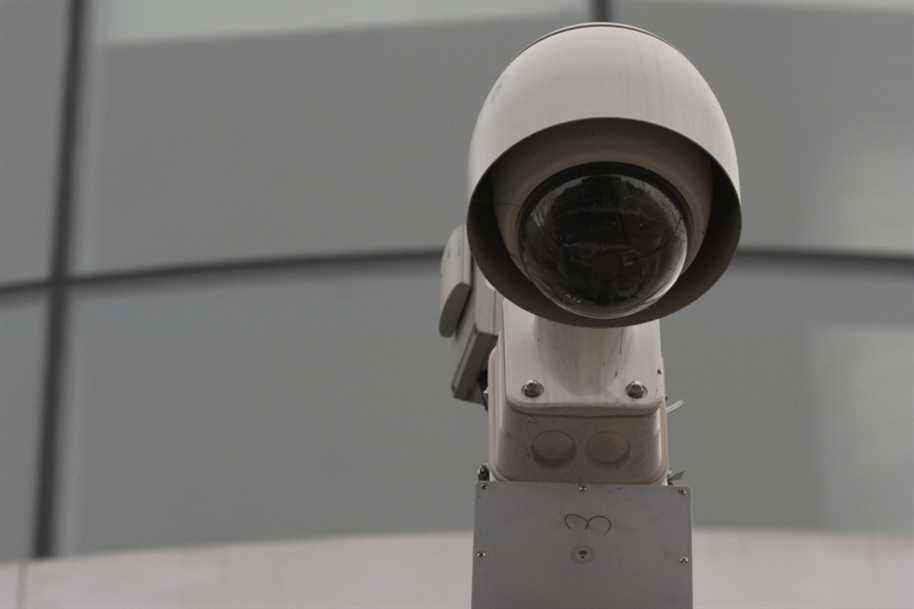(Montreal) The Service de police de la Ville de Montréal (SPVM) plans to install nine other surveillance cameras in the city, in response to an increase in violent crimes, which particularly target teenagers.
Posted at 2:10 p.m.
But community organizations wonder if this technological tool really works to deter criminals, or if these public funds would not be better invested in crime prevention programs aimed at young people.
With the addition of the nine cameras, which cost up to $11,000 each, the SPVM has announced its intention to operate a surveillance network of 42 cameras by the end of the year.
The SPVM refused to answer questions about this urban surveillance network, referring to its website. It indicates that the locations of the “urban security cameras” were chosen following an analysis which “made it possible to prioritize areas struggling with an increase in violent crimes and crimes involving firearms”.
The Quebec government says violent crime, particularly gun-related crime, has increased in Montreal since 2016.
But the professor of criminology Rémi Boivin, of the University of Montreal, wonders how the SPVM can justify the addition of surveillance cameras in the city.
“If the objective is to prevent crime, I would answer that: one, it does not work, and two, they already know it,” said Mr. Boivin in an interview on Monday.
The criminologist participated in a research project that evaluated the effectiveness of the first series of urban surveillance cameras installed by the SPVM in 2010. However, he recalls today that the results of this study indicated that the preventive effects of cameras on violent crimes were inconclusive.
“Crimes against the person are very mobile: if they don’t take place in the park where there is a camera, could it take place in the park right next to it”, where there is no no camera, he said.
Have the “partners” been consulted?
Cameras will be installed in four Montreal parks and other places, including Cabot Square, downtown, a gathering place for homeless Aboriginal people.
On its website, the police say they have informed “certain partner organizations” of the installation of these new cameras. But Ousseynou Ndiaye, general manager of the community organization “Un itinerary pour tous”, in the borough of Montreal-Nord, says he was never consulted.
“We don’t want the issue of violence to be resolved by installing cameras everywhere,” Ndiaye said in an interview on Monday. It is deeper than that, the problem. To think that installing cameras will solve the security issue is that we are beside the point. »
Mr. Ndiaye is not totally against surveillance cameras in the city, however. Last fall, his organization worked with the SPVM to install cameras in the borough, because “everyone was in agreement,” he says.
But this time, Mr. Ndiaye maintains that the SPVM did not consult the “partners”, and he fears that this urban surveillance will become abusive.
“I would have liked us to evaluate the cameras posed: does it come to counter the violence, does it make it possible to elucidate cases? And how much have we invested in the community to support people in vulnerable situations, how much do we pay for the cameras? »
A heavy trend everywhere
Other police forces in Canada, including Toronto, are also adding surveillance cameras in their city. Last summer, Ontario announced a total envelope of $6 million over three years for police forces to buy more surveillance cameras. Toronto police already have more than 30 cameras and plans to expand their city surveillance network to 74 cameras by 2028, a spokesperson said Monday.
The Quebec government has invested tens of millions of dollars in recent months to fight violent crime, particularly in the Montreal area. Public Safety Minister Geneviève Guilbault said the number of attempted murders by firearm in the Montreal area quadrupled between 2016 and 2020. There were 25 homicides in Montreal in 2020, and 37 in 2021 .
It was the murders of teenagers in the Montreal area that prompted the authorities to act.
In February, 16-year-old Lucas Gaudet was fatally stabbed following an altercation outside a high school in the West Island of Montreal. In January, 17-year-old Amir Benayad was shot dead in the Plateau-Mont-Royal borough in the island’s first homicide of 2022.
In 2021, 20-year-old Hani Ouahdi was shot dead in a car in December in the borough of Anjou. In mid-November, 16-year-old Thomas Trudel was shot dead in the Saint-Michel borough as he was walking back from a park. Jannai Dopwell-Bailey, 16, died after being stabbed outside his school in October. And in February 2021, 15-year-old Meriem Boundaoui was killed by a “stray bullet” in a drive-by shooting in the borough of Saint-Léonard.
Fo Niemi, director of the Center for Research-Action on Race Relations, says he is concerned that police are investing in surveillance technology instead of spending that money on community crime prevention programs.
“We need a public debate, whether this will become a growing trend,” Niemi said on Monday. “There is a bit of disconnection in terms of information for the population. This is something the City and police should consider, as transparency is key to gaining and maintaining community trust and cooperation. »
